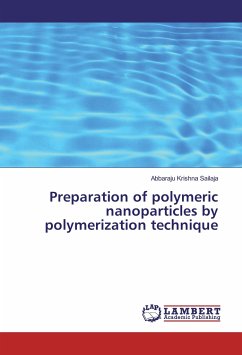
Nanoparticles Based Gene Therapy
Versandkostenfrei!
Versandfertig in 6-10 Tagen
62,99 €
inkl. MwSt.

PAYBACK Punkte
31 °P sammeln!
Silica nanoparticles are inorganic particles made of saline-based precursors, able to conjugated with functional groups of dyes and drugs. Typically, they are ultrafine particles (less than 100 nm), presenting approved safety, high biostability and good biodistribution. In comparison with traditional organic-based fluorescent dye molecules and fluorescent proteins, sensitivity and photostability of silica nanoparticles are highly improved [1]. Other than these advantages, silica nanoparticles are capable to permeate and retain in tumor cells [1]. Therefore, they can be applied for various biom...
Silica nanoparticles are inorganic particles made of saline-based precursors, able to conjugated with functional groups of dyes and drugs. Typically, they are ultrafine particles (less than 100 nm), presenting approved safety, high biostability and good biodistribution. In comparison with traditional organic-based fluorescent dye molecules and fluorescent proteins, sensitivity and photostability of silica nanoparticles are highly improved [1]. Other than these advantages, silica nanoparticles are capable to permeate and retain in tumor cells [1]. Therefore, they can be applied for various biomedical applications, especially in cancer diagnosis and treatment, such as fluorescent imaging, drug delivery, biosensors, and biomarkers. Among these applications, using fluorescent silica nanoparticles for cancer imaging has recently attracted intensive interest.












